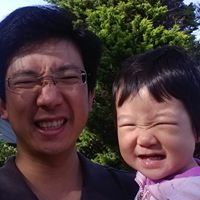Fujian Wang
age ~50
from San Ramon, CA
- Also known as:
-
- Fu J Wang
- Fujian Fujian Wang
- Jian Wang Fu
Fujian Wang Phones & Addresses
- San Ramon, CA
- Fremont, CA
- Iowa City, IA
- 374 4Th Ave, Salt Lake City, UT 84103 • 8015963812
Work
-
Company:University of iowaApr 2012
-
Position:Assistant research scientist
Education
-
School / High School:University of Utah- Salt Lake City, UT2002
-
Specialities:PhD in Physics, organic semiconductor materials and devices
Skills
organic semiconductor device fabrication... • OLED • OPV • OFET • organic single crystal • thermal evaporation • sputtering • e-beam • spin coating • micro-patterning • profilometer • SEM • AFM • FTIR • Labview programming • optical spectra • time of flight
Resumes

Fujian Wang Iowa City, IA
view sourceWork:
University of Iowa
Apr 2012 to 2000
Assistant Research Scientist University of Iowa
Iowa City, IA
Mar 2009 to Mar 2012
Postdoctoral Fellow University of Utah
Salt Lake City, UT
Aug 2002 to Mar 2009
Research Assistant Fudan University
Aug 1999 to Aug 2002
Research Assistant
Apr 2012 to 2000
Assistant Research Scientist University of Iowa
Iowa City, IA
Mar 2009 to Mar 2012
Postdoctoral Fellow University of Utah
Salt Lake City, UT
Aug 2002 to Mar 2009
Research Assistant Fudan University
Aug 1999 to Aug 2002
Research Assistant
Education:
University of Utah
Salt Lake City, UT
2002 to 2009
PhD in Physics, organic semiconductor materials and devices Fudan University
1999 to 2002
MS in Physics, semiconductor physics Shandong University
Jinan, Shandong, China
1995 to 1999
BA in Physics, Semiconductor Physics and Devices
Salt Lake City, UT
2002 to 2009
PhD in Physics, organic semiconductor materials and devices Fudan University
1999 to 2002
MS in Physics, semiconductor physics Shandong University
Jinan, Shandong, China
1995 to 1999
BA in Physics, Semiconductor Physics and Devices
Skills:
organic semiconductor device fabrication and characterization, OLED, OPV, OFET, organic single crystal, thermal evaporation, sputtering, e-beam, spin coating, micro-patterning, profilometer, SEM, AFM, FTIR, Labview programming, optical spectra, time of flight

Fujian Wang
view sourceUs Patents
-
Device Comprising Deuterated Organic Interlayer
view source -
US Patent:20130095327, Apr 18, 2013
-
Filed:Sep 17, 2010
-
Appl. No.:13/497499
-
Inventors:Zeev Valy Vardeny - Salt Lake City UT, US
Leonard Wojcik - Holladay UT, US
Tho Duc Nguyen - Salt Lake City UT, US
Fujian Wang - Iowa City IA, US -
Assignee:University of Utah Research Foundation - Salt Lake City UT
-
International Classification:H01F 10/08
H01F 41/14 -
US Classification:428419, 4284111, 428704, 428523, 428457, 428461, 427 58
-
Abstract:The present invention relates to devices that can be manipulated or controlled with a magnetic field, such as a spin-valve device, an organic light-emitting device, a compass, or a magnetometer. The devices of the invention comprise an organic interlayer comprising a deuterated organic material.
-
Organic Magnetoelectroluminescence For Transduction Between Magnetic And Optical Information
view source -
US Patent:20160197133, Jul 7, 2016
-
Filed:Aug 25, 2015
-
Appl. No.:14/834770
-
Inventors:- Iowa City IA, US
- New York NY, US
Andrew Kent - New York NY, US
Fujian Wang - San Ramon CA, US
Nicholas Harmon - Las Vegas NV, US
Ferran Macia Bros - Sabadell, ES -
International Classification:H01L 27/32
G11C 11/16
H01L 43/02
H01L 43/08
H01L 51/52
H01L 51/10 -
Abstract:An optoelectronic device which can read magnetically stored information, and convert it into optical light signals using organic or “plastic” semiconductors is described. Such a device may use OLEDs, and may be termed an “organic magneto-optic transducer” (OMOT). An OMOT device can read magnetically stored information, and convert it into optical light signals. The OMOT may provide benefits such as non-volatile storage, flexible films, reduced cost, and operation at room temperature.
-
Device Comprising Deuterated Organic Interlayer
view source -
US Patent:20150194473, Jul 9, 2015
-
Filed:Dec 11, 2014
-
Appl. No.:14/568082
-
Inventors:- Salt Lake City UT, US
Leonard Wojcik - Holladay UT, US
Tho Duc Nguyen - Salt Lake City UT, US
Fujian Wang - Iowa City IA, US -
International Classification:H01L 27/32
H01L 51/50
H01L 51/52
H01L 51/00
H01L 51/56 -
Abstract:The present invention relates to devices that can be manipulated or controlled with a magnetic field, such as a spin-valve device, an organic light-emitting device, a compass, or a magnetometer. The devices of the invention comprise an organic interlayer comprising a deuterated organic material.

Fujian Wang
view source
Fujian Wang
view sourceFriends:
Jonathan Defevers, Lan Chen, Krista Gibbs, Jacques Marcellin

Wang Fujian
view sourceFriends:
Anna Jia, Rebecca Wu

Fan Fujian Wang
view sourceFriends:
Rosemary Xu, Lin Deng, Yutian Li, Xun Zhu, Connie Huizi Lou, Yi-Shan Tsai

Fan Fujian Wang
view sourceJoin Facebook to connect with Fan Fujian ...

Fujian Wang
view sourceFlickr
News

Information storage for the next generation of plastic computers
view source- In addition to Flatt, Wohlgenannt and Kent, co-authors of the Nature Communications paper are Fujian Wang and Nicolas J. Harmon of the UI Department of Physics and Astronomy and Optical Science and Technology Center, and Ferran Maci of the NYU Department of Physics.
- Date: Apr 17, 2014
- Category: Sci/Tech
- Source: Google
Mylife

Fujian Wang
view sourceLocality:
Davenport, IA
Other Social Networks

Fujian Wang Google+
view sourceNetwork:
GooglePlus
Dec 13, 2012 - Fujian Wang - Organic device, Research - Fremont, CA - The University of Iowa - The University of Utah - Fudan University - Shandong...
Youtube
Wang Zhelin 51 PTS 13 REBS Fujian Sturgeons v...
Business email: [email protected]... I DO NOT own clips or videos that...
-
Duration:3m 15s
Get Report for Fujian Wang from San Ramon, CA, age ~50













